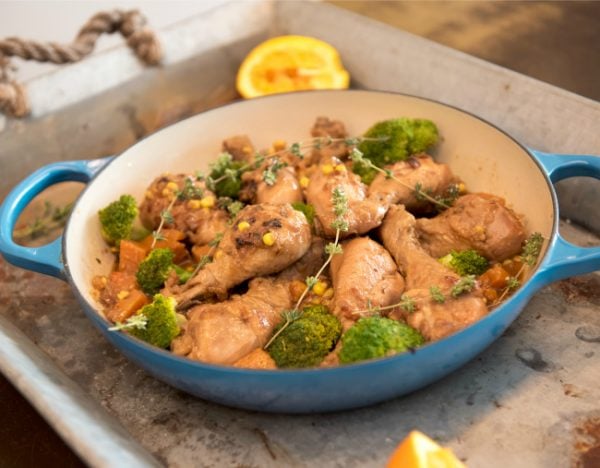

Chicken is an incredibly popular meal choice among Australian families. Not only is it packed with nutritious protein to support healthy development and immunity, it’s a versatile and tasty crowd pleaser.
Whether it’s a delicious chicken casserole, a healthy pizza topping or simply shredded and enjoyed in a wholegrain wrap with some homemade hummus, it generally goes down a treat with all ages and even fussier eaters (who aren’t vegetarian of course). It can unfortunately also be one of the biggest food poisoning hazards in the home kitchen, so it’s incredibly important to prepare (and cook) it carefully.
In my book Wholesome Child: A Complete Nutrition Guide and Cookbook, I discuss the nutritional importance of protein in a child’s diet and offer up guidance around how to choose high-quality chicken at the supermarket. I feature a range of delicious and nutritious allergy-friendly recipes and provide detailed step-by-step guides for parents around how to get their little ones involved in the kitchen from as early on as possible.
Children learn through experience, play and repetition, so by starting the conversations around food hygiene and food preparation you’ll be setting your little ones up with a useful set of life skills to stand them in good stead.
Involving children in every step of the chicken preparation and cooking activity is a great way to explain the reasons for doing certain things – as well as what to avoid doing, and why.



Top Comments
This was a great article - more food hygiene, storage and preparation articles please :)